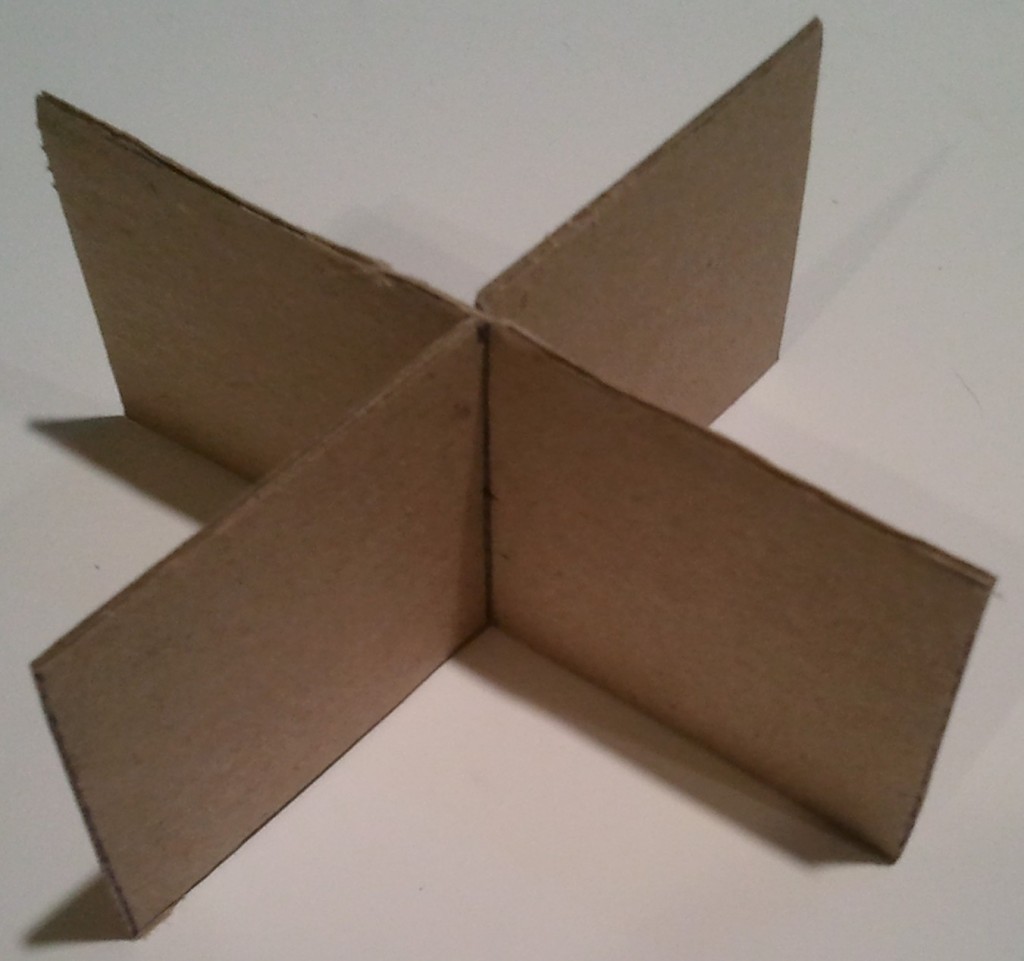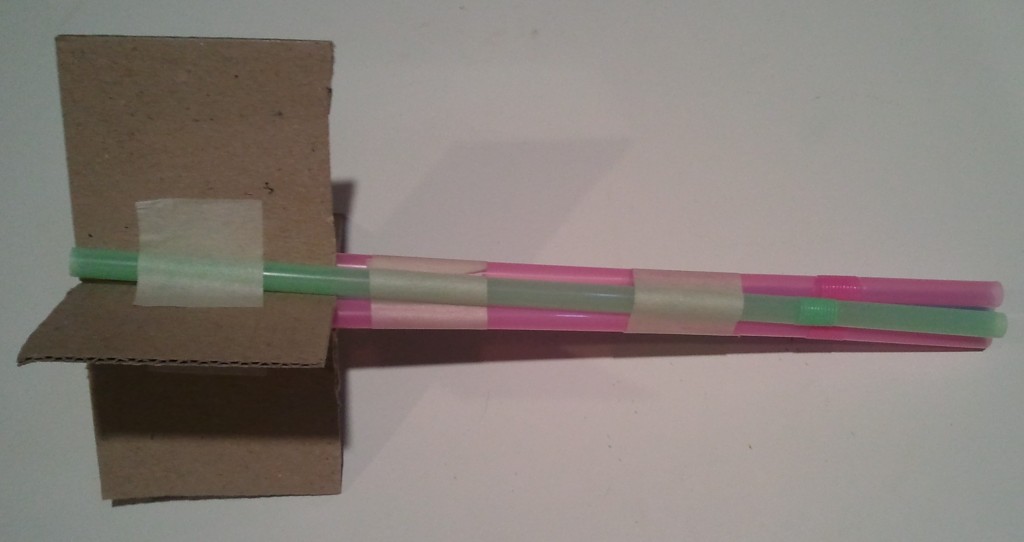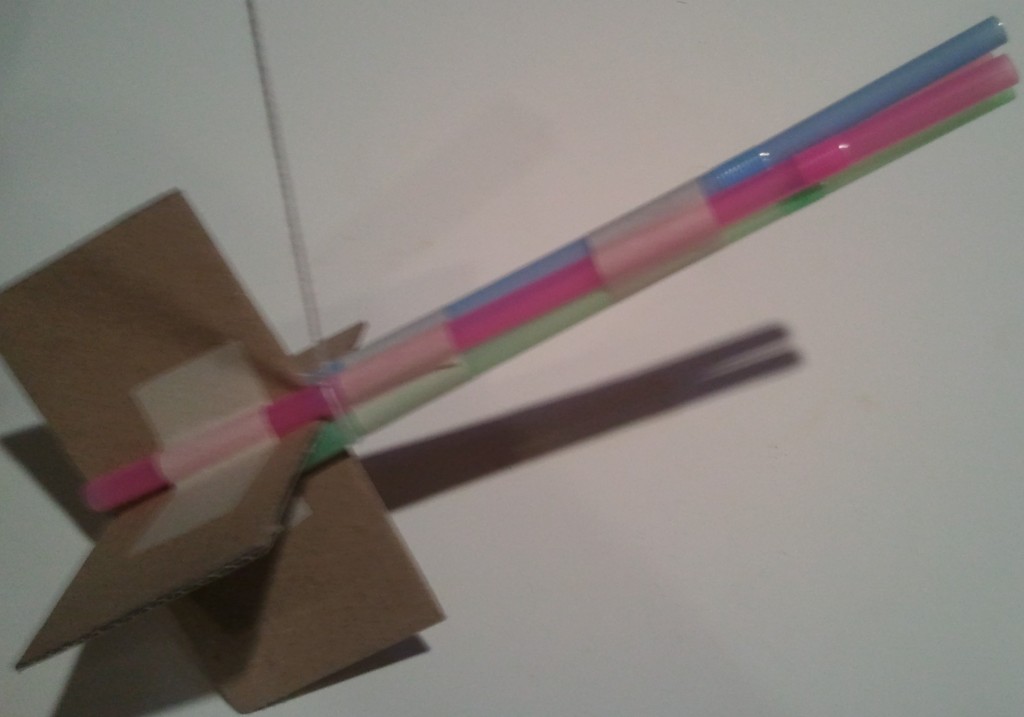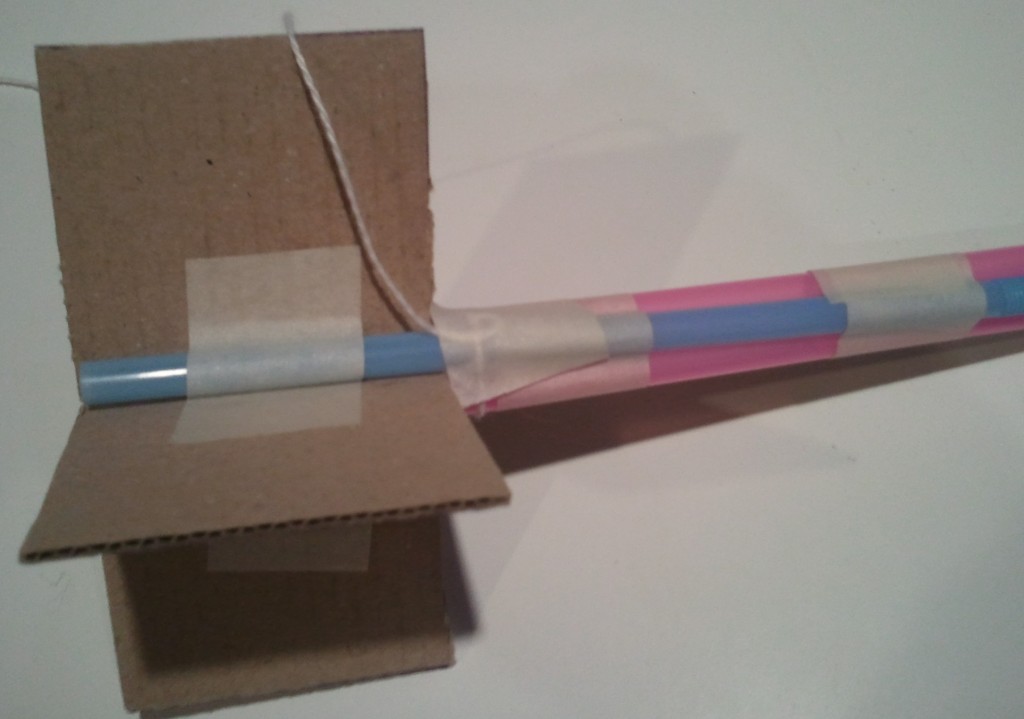Je vous demande pardon, mes amis, I have been away far too long, but I have much to tell you tonight. We will together assemble an experiment that will begin to shed some light on the operation of fins. If you please, look at this image of the fins I have cut from a sheet of thin, stiff cardboard.
These pieces which I have cut with scissors are two inches tall by four inches wide. Notice that I have cut a slot in the middle of each one that is half the width, or one inch, long. A couple of snips of the scissors is all that is required, much precision is not necessary. We will slide the two slots together thusly:
And now push the two pieces together until they make an ‘X.’
Although you will remind me that I earlier suggested using three soda straws for the rocket body, as I assembled this experiment it became clear to me that four would be much more suitable. I obtained straws from the grocery store and attached them to the fins with cut strips of masking tape. Afterwards, I secured the straws together with longer strips of tape.
Now, using the edge of a ruler, a butter knife, or some other very thin device, try to determine where the balance point of our test rocket lies. You should discover that the balance point is farther to the rear, to the end with the fins, than you are able to determine by this method.
But of what purpose are the fins? You may have surmised by now that their function is to keep the rocket going in a straight line as it flies throught the air. Quite true, and notice that I said through the air. Fins are quite useless in space, even on X-wing fighters. But we are limiting our endeavors to those things available to us on earth, are we not?
Now take a string, make a slip knot in one end, place it over the straws, and tighten it as close to the fins as possible. Now lift the rocket by the string and see how it balances. Voilà !
Please forgive the focus of this picture; it is difficult at my age to hold both the string of the rocket and the camera at the same time. If I had my laboratory from my previous reality, I would be able to provide you with a much better image. But then, again, we had no Internet in that reality. The point I wish to make here is that the tail, or fin end, is heavier than the nose, or front end.
Now, make certain you have plenty of room and there is no danger of knocking over a Ming vase or striking a pet or a member of your family, and with about three feet of slack in the string, swing the rocket around your head and observe its behavior.
Did the nose of the rocket always lead the way as you swung it around? That is good. We want the rocket to be stable, that is, we want to be sure the rocket will travel in a straight line when we launch it. But what have we proven? Nothing, I fear. When left to the forces of the engine and of the air that is whizzing across the surfaces of the fins and the body of the rocket, it will rotate, if it is going to rotate, around its center of gravity. Since we were unable to suspend the rocket from its center of gravity, or balance point, we were unable to observe its behavior under the proper conditions.
Take another piece of tape and, through experimentation, secure the string a bit farther back until the rocket balances when lifted by the string. Notice that in the following photo, this is a very small distance for this rocket.
Now try swinging it around your head. What did you observe this time? If all was done correctly, the rocket should have been oriented with its fins downward as if it were flying sideways. Why is this? That is something for you to ponder, mes amis. Until next time.









